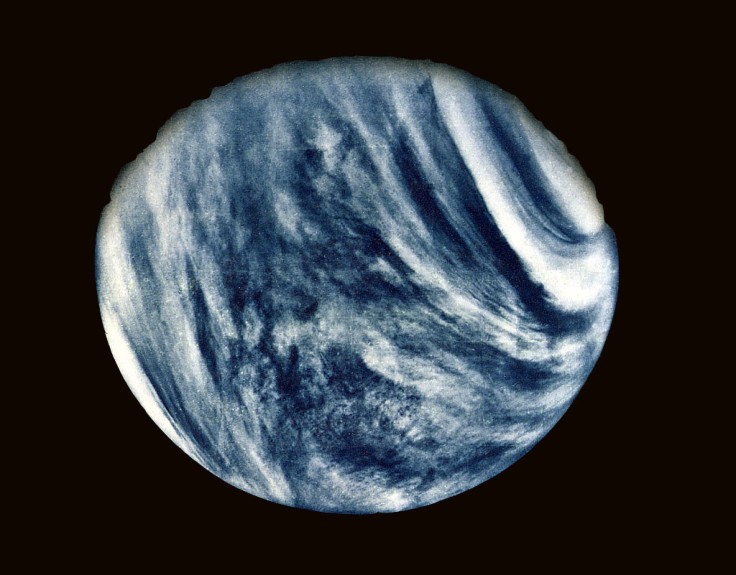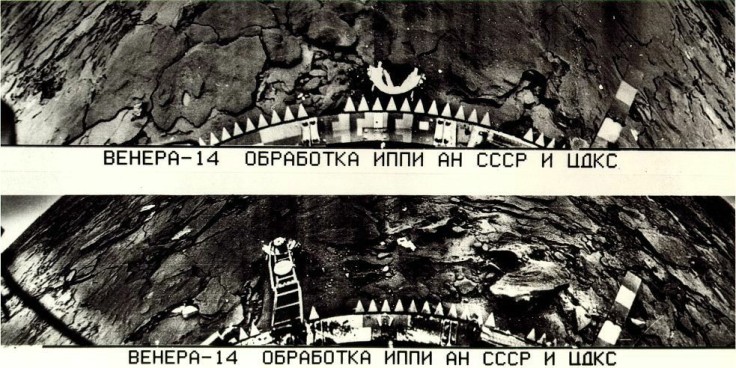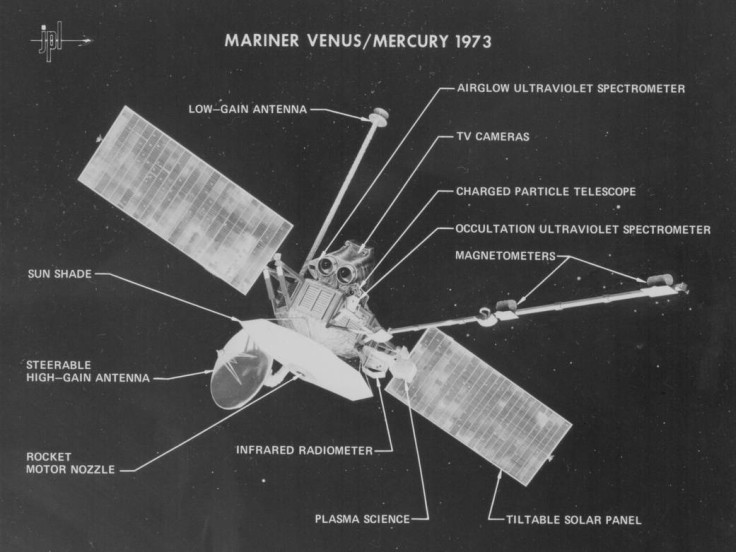It is not a secret that Venus is Earth's nearest planetary neighbor and is the second planet from the Sun. But have you ever wondered what this planet looks like up close?
First Close-Up Photo of Venus

No. This is not a picture of the Earth.
This is, in fact, the first close-up photo of Venus taken by NASA's Mariner 10 mission on Feb. 5, 1974.
According to NASA, the photo was color-enhanced using an ultraviolet filter in its imaging equipment to bring out Venus's hazy atmosphere as seen by the human eye. Venus is always shrouded in a thick layer of carbon dioxide-rich clouds, and its surface temperature near 900 degrees Fahrenheit.
If we are going zoom further, this is what the surface of Venus looks like:

In Depth: Spacecraft Which Took the First Close-Up Photo of Venus
The Mariner 10 mission was the first to use gravity assist, which involves altering a spacecraft's speed and trajectory to fly by its target planet. In fact, this spectacular spacecraft has many "firsts" but let us discuss that for later.
NASA noted that the Mariner 10's primary objective was to investigate Mercury's atmosphere (if any), surface, and physical properties. As it flew toward its first destination, Venus, the spacecraft returned stunning photographs of both Earth and the Moon shortly after leaving Earth orbit.
But its journey in space has not been smooth. Several technical issues arose during the journey, including faults with the high-gain antenna and the attitude control system. Mariner 10 successfully returned data on Comet C/1973 E1 Kohoutek in January 1974, marking the first time a spacecraft successfully returned data on a long-period comet.
Read More : #SpaceSnap The Alluring Crab Nebula Captured by the Hubble and Herschel Space Telescopes
Mariner 10 neared Venus for a gravity assist maneuver to move it toward Mercury after midcourse corrections on Nov. 13, 1973, and Jan. 21, 1974. The spacecraft began returning photographs of Venus on Feb. 5, 1974, with the first image showing the planet's day-night terminator as a thin bright line.
During its rendezvous with Venus, Mariner 10 returned 4,165 images and acquired vital scientific data. At 17:01 UT on Feb. 5, 1974, the closest flyby range was 3,584 miles (5,768 kilometers).
The spacecraft was now on its way to the innermost planet, which it reached after another course correction on March 16, 1974. As Mariner 10 got closer to Mercury, photographs revealed a lunar-like landscape with craters, ridges, and chaotic terrain.
Mariner 10's 'Firsts'
The first spacecraft deployed to investigate the planet Mercury
The first spacecraft to utilize the gravity of one planet (Venus) to reach another.
The first spacecraft to provide information about a long-period comet
The first mission to explore two planets (Mercury and Venus) during a single space mission.
The first spacecraft to use gravity to alter its flight course.
The first spacecraft to return to its intended destination following an initial encounter
The first probe to employ solar wind as a primary means of spacecraft orientation while in flight.
Scientific Instruments Loaded in Mariner 10
As we have previously stated, Mariner 10's primary objective was to investigate Mercury's atmosphere, surface, and physical properties. However, for this mission to be successful, various scientific instruments will be needed.

This image shows the spacecraft's equipment, which were used to investigate the atmospheric, surface, and physical properties of Venus and Mercury.
Here is the list of instruments which can be found on this spectacular spacecraft.
Two Telescopes/Cameras
Infrared Radiometer
Ultraviolet Airglow Spectrometer
Ultraviolet Occultation Spectrometer
Magnetometer
Charged Particle Telescope
Plasma Analyzer









